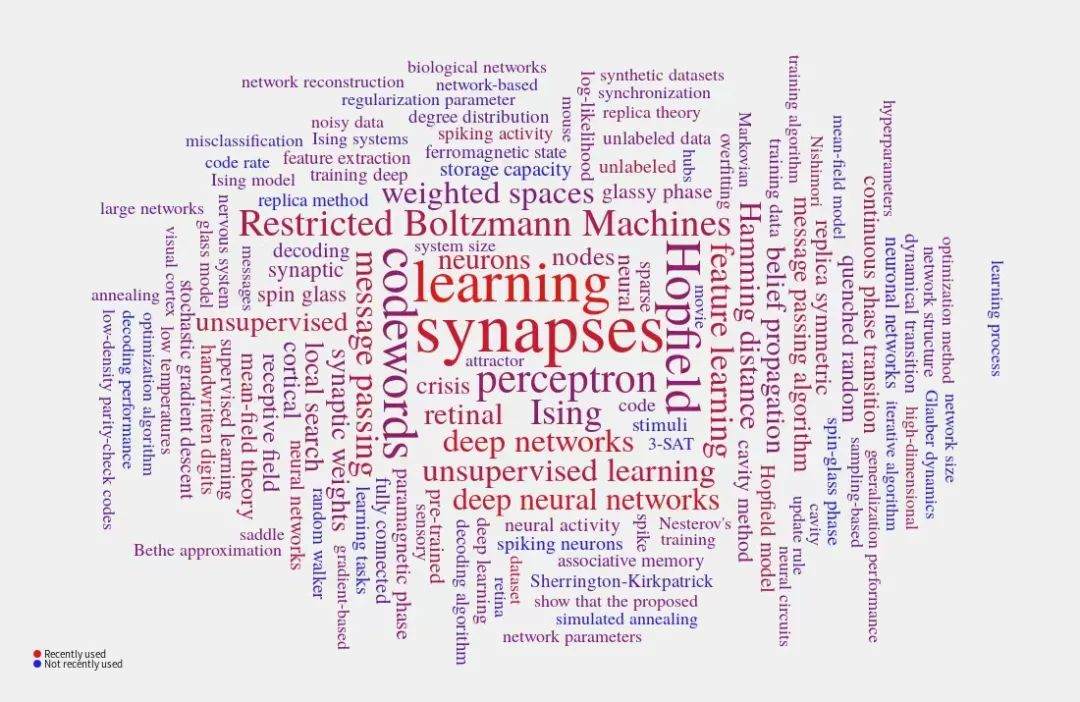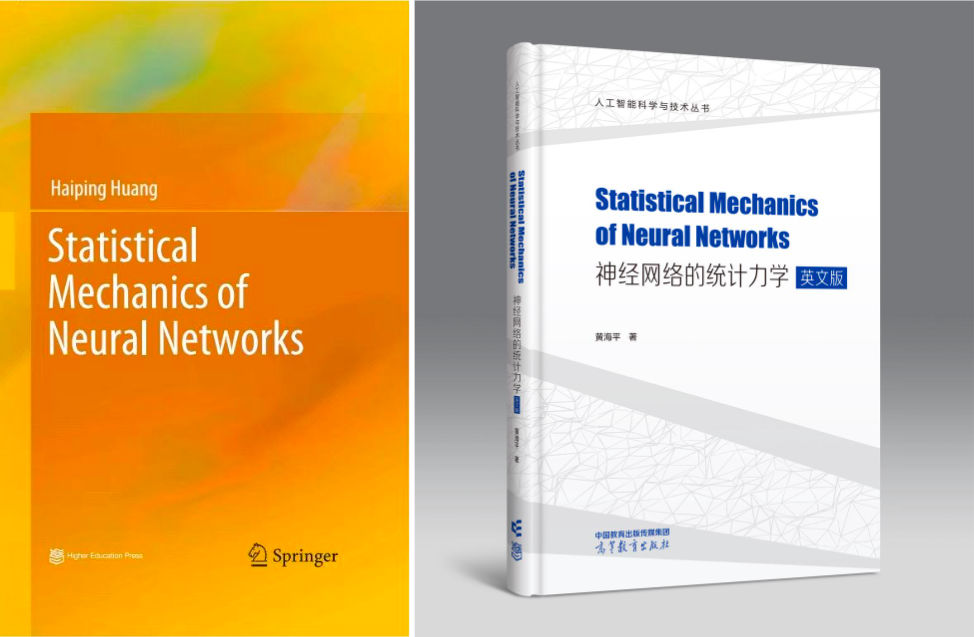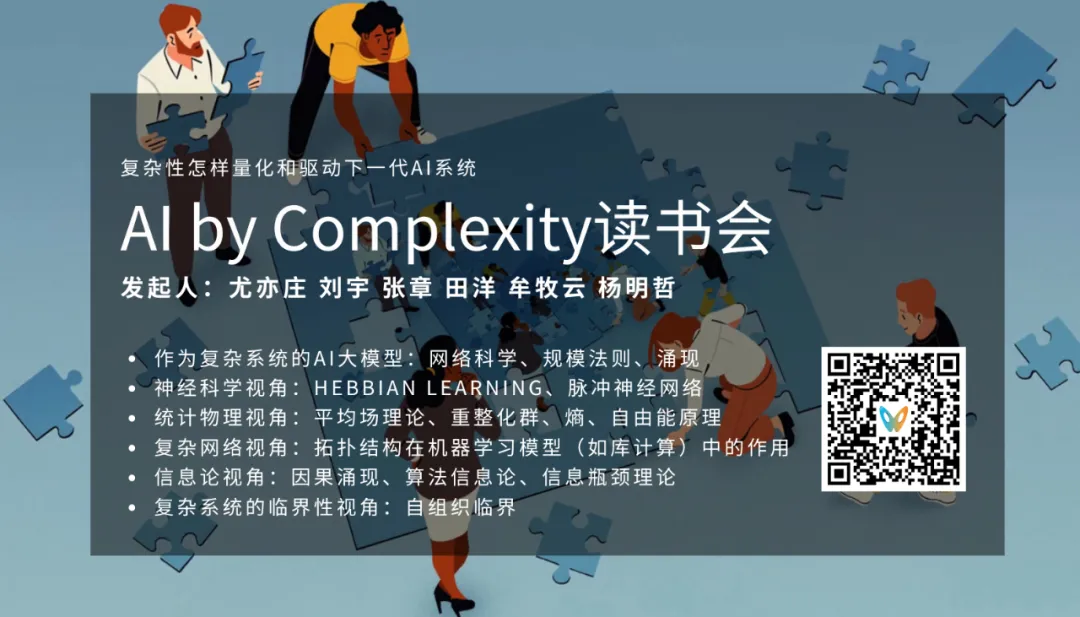
导语

课程介绍
课程介绍
第 28 讲:随机矩阵之非厄米篇:索普林斯基遇见麦克斯韦
课程负责人
课程负责人

加入课程,开始学习
加入课程,开始学习
为了庆祝课程完整上线1年,让更多的人体验学习课程的优质内容,我们特做出如下优惠方案:
1. 价格调整为49元;
2. 同时对于2个月内(2024年4月15日-6月18日)购买本课程的用户,将返还价值200元的积分到账户,可以用户消费(不可提现);
3. 加入「AI by Complexity」读书会的成员,开放4个月课程学习权限(2024年7月-10月)。

课程链接:https://campus.swarma.org/course/4543?from=wechat
第一步:扫码付费
第二步:在课程详情页面,填写“学员信息登记表”
第三步:扫码添加助教微信,入群本课程可开发票。
核心参考书籍
核心参考书籍

书籍目录(详版):
Chapter 1: IntroductionChapter 2: Spin Glass Models and Cavity Method
2.1 Multi-spin Interaction Models
2.2 Cavity Method
2.3 From Cavity Method to Message Passing Algorithms
Chapter 3: Variational Mean-Field Theory and Belief Propagation
3.1 Variational Method
3.2 Variational Free Energy
3.3 Mean-Field Inverse Ising Problem
Chapter 4: Monte Carlo Simulation Methods
4.1 Monte Carlo Method
4.2 Importance Sampling
4.3 Markov Chain Sampling
4.4 Monte Carlo Simulations in Statistical Physics
Chapter 5: High-Temperature Expansion
5.1 Statistical Physics Setting
5.2 High-Temperature Expansion
5.3 Properties of the TAP Equation
Chapter 6: Nishimori Line
6.1 Model Setting
6.2 Exact Result for Internal Energy
6.3 Proof of No RSB Effects on the Nishimori Line
Chapter 7: Random Energy Model
7.1 Model Setting
7.2 Phase Diagram
Chapter 8: Statistical Mechanical Theory of Hopfield Model
8.1 Hopfield Model
8.2 Replica Method
8.3 Phase Diagram
8.4 Hopfield Model with Arbitrary Hebbian Length
Chapter 9: Replica Symmetry and Replica Symmetry Breaking
9.1 Generalized Free Energy and Complexity of States
9.2 Applications to Constraint Satisfaction Problems
9.3 More Steps of Replica Symmetry Breaking
Chapter 10: Statistical Mechanics of Restricted Boltzmann Machine
10.1 Boltzmann Machine
10.2 Restricted Boltzmann Machine
10.3 Free Energy Calculation
10.4 Thermodynamic Quantities Related to Learning
10.5 Stability Analysis
10.6 Variational Mean-Field Theory for Training Binary RBMs
Chapter 11: Simplest Model of Unsupervised Learning with Binary
11.1 Model Setting
11.2 Derivation of sMP and AMP Equations
11.3 Replica Computation
11.4 Phase Transitions
11.5 Measuring the Temperature of Dataset
Chapter 12: Inherent-Symmetry Breaking in Unsupervised Learning
12.1 Model Setting
12.2 Phase Diagram
12.3 Hyper-Parameters Inference
Chapter 13: Mean-Field Theory of Ising Perceptron
13.1 Ising Perceptron model
13.2 Message-Passing-Based Learning
13.3 Replica Analysis
Chapter 14: Mean-Field Model of Multi-layered Perceptron
14.1 Random Active Path Model
14.2 Mean-Field Training Algorithms
14.3 Spike and Slab Model
Chapter 15: Mean-Field Theory of Dimension Reduction in Neural Networks
15.1 Mean-Field Model
15.2 Linear Dimensionality and Correlation Strength
15.3 Dimension Reduction with Correlated Synapses
Chapter 16: Chaos Theory of Random Recurrent Neural Networks
16.1 Spiking and Rate Models
16.2 Dynamical Mean-Field Theory
16.3 Lyapunov Exponent and Chaos
16.4 Excitation-Inhibition Balance Theory
16.5 Training Recurrent Neural Networks
Chapter 17: Statistical Mechanics of Random Matrices
17.1 Spectral Density
17.2 Replica Method and Semi-circle Law
17.3 Cavity Approach and Marchenko
17.4 Spectral Densities of Random Asymmetric Matrices
Chapter 18: Perspectives
AI By Complexity读书会招募中
集智俱乐部联合加利福尼亚大学圣迭戈分校助理教授尤亦庄、北京师范大学副教授刘宇、北京师范大学系统科学学院在读博士张章、牟牧云和在读硕士杨明哲、清华大学在读博士田洋共同发起「AI By Complexity」读书会,探究如何度量复杂系统的“好坏”?如何理解复杂系统的机制?这些理解是否可以启发我们设计更好的AI模型?在本质上帮助我们设计更好的AI系统。读书会于6月10日开始,每周一晚上20:00-22:00举办。欢迎从事相关领域研究、对AI+Complexity感兴趣的朋友们报名读书会交流!
点击“阅读原文”,报名课程
内容中包含的图片若涉及版权问题,请及时与我们联系删除





评论
沙发等你来抢